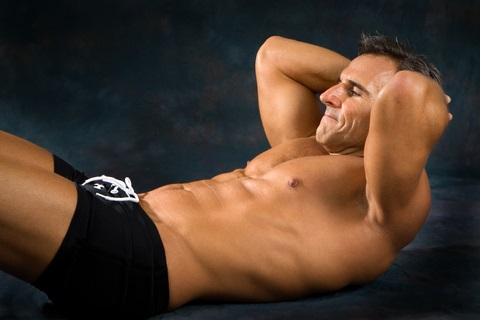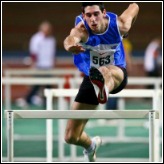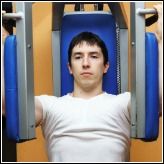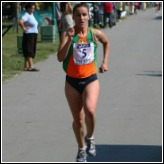Great Core Strength Training Exercises For Your Training Program
Not all core strength training exercises were created equal. Some high load, gross exercises, will dress themselves up as performance enhancing when in fact they are not. While other less demanding core exercises may seem at first glance, a waste of time, yet are the exact exercises you should include in your training.
The principle I have always used when planning any training program is, general fitness is good, but specific fitness is even better. However, even that is not the whole story, because when it comes to core training, whether it fits into your training program as either general or specific training depends entirely on your sport or event.

For example, if you are a track and field sprinter, you will need a well-conditioned core, but this type of conditioning is probably not going to be a deal breaker for sprinters in terms of their performance (as I write this I know that’s not completely true). In this case core strength will be more of a general importance to your training program. If however, you are a Judo player who has to throw your opponents around with the use of your arms and your hip, the strength and the level of your core fitness training program is probably going to be of immense importance to your performance. In this case core training is a specific element in your training program.
We are going to explore core strength training exercises on two levels:
- We are going to look at why core training shouldn’t be seen in isolation to other areas of the body.
- And then, we are going to look at some examples of exercises which will help you to strengthen your core in the most efficient way.
The Weak Link in Core Strength Training Exercises
Whether core fitness training is of general or specific importance to you, there is a truism which states that “a chain is only as strong as its weakest link”. And while it is important that all sports people have a well-conditioned core, this is not the whole story. Because the core is really only a means of transmitting force from one link in the chain to another and in humans these links are the joints of your body.
At either end of your trunk you have these appendages called limbs (legs and arms). Your legs and arms are linked to your core by your shoulder girdle at the top end of your trunk and by your pelvic girdle at the bottom end of your trunk. If for example, the muscular system which links your core with your pelvis and your pelvis to your leg is out of balance or weak, then it doesn’t matter how strong your core becomes, force cannot be transmitted through your body efficiently.
To achieve complete physical conditioning of your body, you are going to have to strengthen your core and all the muscles in your hip region as an integrated whole. This pertains to where force generation is from the legs. Where force is generated via the arms, then the collar bone is the link. So, when I design a core strength training program for athletes I work with, I am mindful to include exercises which work the muscular systems which joins the core with the legs – in this case the hips.
Exercise Design
The following is a process for designing exercises that specifically strengthen the core region and associated joints. By no means is this the only way you can put this type of training program together. However, by following the philosophy behind putting together this type of exercise program, you will be able to design a core strength training exercise program to suit your particular needs.
Your core strength program should be designed to address the following issues:
- Activate and improve the fitness of your deep muscular structure;
- Strengthen the secondary and superficial muscles around the trunk in all the planes of movements;
- Strengthen the muscles groups above and below the trunk;
- Synchronize the cooperation of the muscle groups of the trunk and structures above and below.
Your program should include the following exercises (numbers correspond with the numbering system above):
- The greyhound and its variations;
- The plank and its variations; Reverse curls with and without load; Side Raise; Sit ups with twist; V-sit ups both singles and doubles;
- Specific gluteus maximus and medius work such as Hip Raise and its variations; Clams and Crab Walks;
- Routines which work the gluteus region and the whole posterior chain such as - Superman, Back Raise, Alternating Back Raise.
The take home message from this is that when you design your program of core strength training exercises, you need to ensure that the muscles surrounding the joints which link your arms and legs are exercised in unison with your trunk. In this way core strength will benefit your sporting performance.
Sign Up For The Latest Track And Field News And Improve Your Athletic Performance!
From "Core Strength Training Exercises" To "Faster, Stronger, Better – Your Shortcut To Improved Athletic Performance"
Learn more about Core Training.







